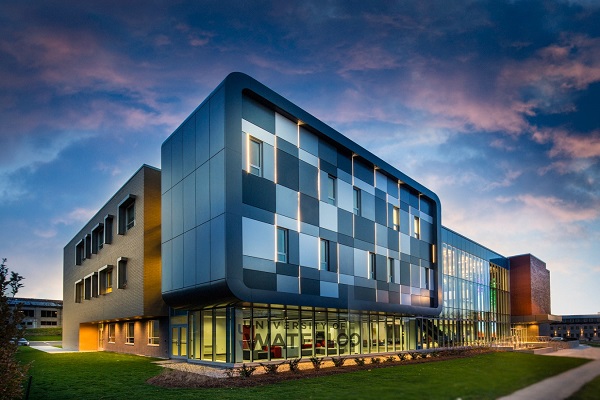University of Waterloo expert working for electric vehicle adoption
As automobile manufacturers continue their pivot to electric vehicles (EVs), the days of the internal combustible engine are ending — and sooner than you think. In Canada, the sale of new gas-powered vehicles will end in 2035. South of the border, the U.S. is set to end the sale of new gas-powered light vehicles as early as 2025.
For many car owners, their next purchase will be an EV. But as many current EV owners know, the environmental benefits of battery-powered cars come with a tradeoff.
Dr. Yverick Pascal Rangom, a chemical engineering professor at the University of Waterloo, identifies that tradeoff as the driving distance existing battery technology can support.
“Electric motors are fine,” he says. “They’re extremely small and powerful. The problem is the battery, specifically how much energy they can store, their longevity, and how long they take to charge.”
In conjunction with other researchers at Waterloo, Rangom is now working on innovations that target those limitations. In one initiative, he is leading a collaboration with fellow associate professor Dr. Michael Pope on a research project sanctioned by automotive parts manufacturer Magna.
“The last technical hurdle we have for lithium-ion batteries — at least for electric vehicles — is fast charging,” Rangom says. “The first group to achieve this will have the most leverage and opportunity in the industry. We still have a long way to go to get this technology to everyone. It’s a big role for researchers like me and others at the University.”
While many EVs can be plugged into a standard outlet for charging, they often take hours to reach a full charge. EV owners who forget to plug in overnight can wake up to find that their morning commute will be significantly delayed.
A dedicated fast EV charger at home is one option. Installing these dedicated chargers has become a widely available service that home electricians provide. But while the installation cost is affordable, most existing homes do not have the electrical capacity to power them.
Single-family homes built before the late 1980s typically have only 100-amp service. Dedicated EV chargers require additional capacity, and many homeowners must upgrade to 200-amp service. This type of upgrade can cost anywhere from $1,000 to $4,000.
Charging away from home is another challenge. Many municipalities and businesses have installed dedicated chargers, and manufacturers are working to build a network of fast charging stations to provide the same coverage as traditional gas stations do today.
EV pioneer Tesla has one of the largest networks of what it calls superchargers. Tesla reported having over 40,000 superchargers available worldwide, including 17,000 in the U.S. and 147 in Canada.
Drivers of gas-powered vehicles running on fumes know there’s almost always a gas station nearby. But even with dedicated home chargers and the growing network of public chargers, EV owners still struggle with “range anxiety,” the fear that they will be stranded because they don’t have enough battery charge to reach their destination. As we get closer to the end of the internal combustion engine era, EV manufacturers and their suppliers are working to improve charging time and battery capacity.
Waterloo researchers like Rangom are leading the way in many of these improvements. His research focuses on improving the performance of lithium-ion (Li-ion) and sodium-ion (Na-ion) battery electrodes, capacitors and future solid-state batteries.
The work is helping to advance the fast-charging capabilities of Li-ion batteries to eliminate range anxiety and speed up the transition to our EV future. Rangom’s path to battery research started not in chemical engineering, but with a degree in mechanical engineering.
“My first passion was vehicles, and I wanted to try to make a difference in the field,” he says. “Early on, it seemed quite clear to me that the future of vehicles would be electric. That’s when I moved into the engineering of electrochemical storage devices.”
Electric motors used in EVs are smaller and more powerful than most of their gas-powered cousins. The reduced size of an EV engine allows for more storage, most notably with the introduction of the “frunk.” The frunk is the colloquial name for the front storage area made possible by an EV’s powertrain and motor being located under the vehicle rather than in the front compartment. But as great as frunks are, EV owners must still deal with the limited capacity of batteries, battery life and slow charging times.
Chemical batteries like those found in EVs have two sides — the anode and the cathode. During charging, a chemical reaction occurs in the battery, electrons are released from the cathode side and pass through the circuit toward the anode side.
Rangom’s research primarily involves improving the anode side, which typically uses graphite or silicon. He is exploring alternative electrode architectures to replace the non-conductive structural elements of today’s electrodes to achieve faster charging.
“I’m trying not to stray from lithium-ion batteries because we already have a lot of infrastructure that is in place,” he says.

